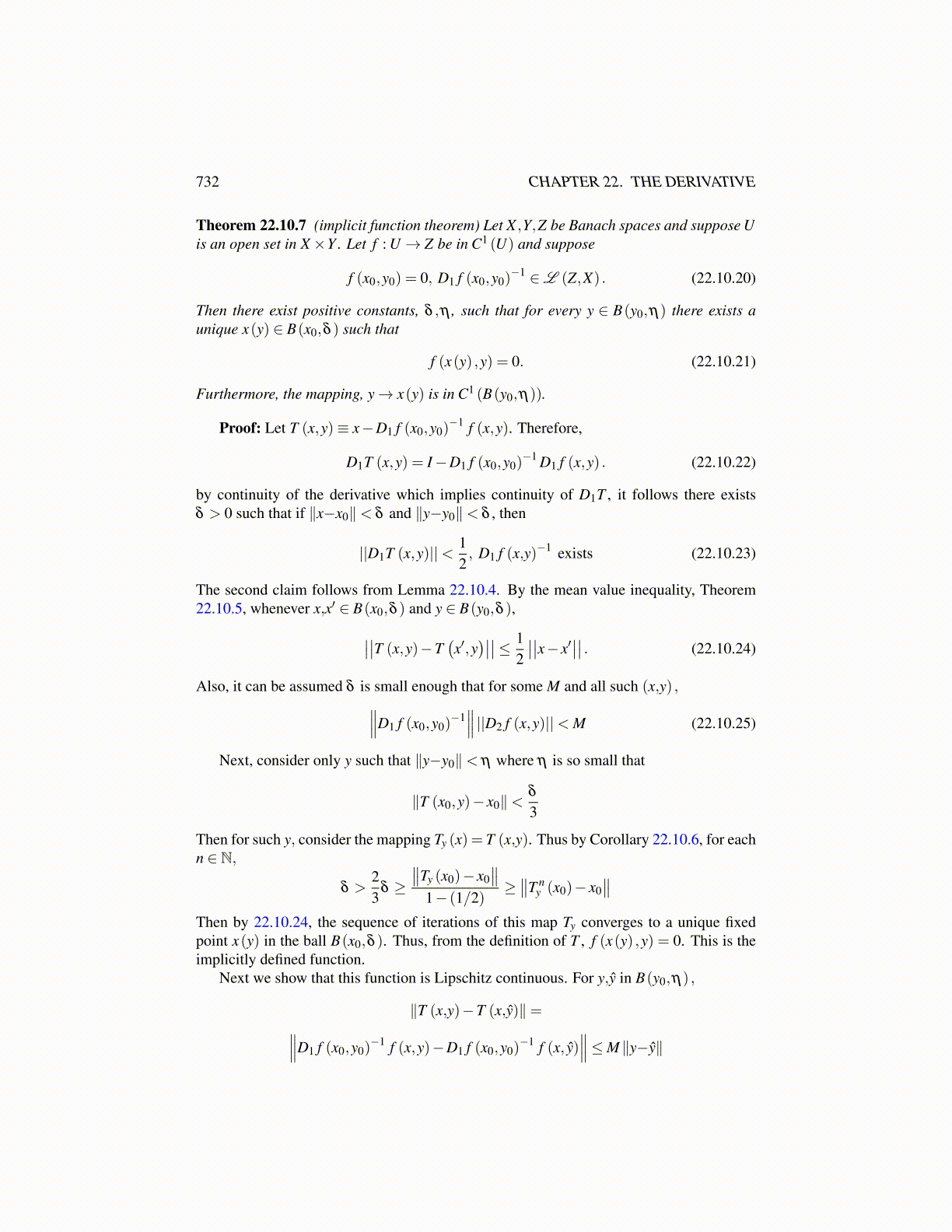
732 CHAPTER 22. THE DERIVATIVE
Theorem 22.10.7 (implicit function theorem) Let X ,Y,Z be Banach spaces and suppose Uis an open set in X×Y . Let f : U → Z be in C1 (U) and suppose
f (x0,y0) = 0, D1 f (x0,y0)−1 ∈L (Z,X) . (22.10.20)
Then there exist positive constants, δ ,η , such that for every y ∈ B(y0,η) there exists aunique x(y) ∈ B(x0,δ ) such that
f (x(y) ,y) = 0. (22.10.21)
Furthermore, the mapping, y→ x(y) is in C1 (B(y0,η)).
Proof: Let T (x,y)≡ x−D1 f (x0,y0)−1 f (x,y). Therefore,
D1T (x,y) = I−D1 f (x0,y0)−1 D1 f (x,y) . (22.10.22)
by continuity of the derivative which implies continuity of D1T , it follows there existsδ > 0 such that if ∥x−x0∥< δ and ∥y−y0∥< δ , then
||D1T (x,y)||< 12, D1 f (x,y)−1 exists (22.10.23)
The second claim follows from Lemma 22.10.4. By the mean value inequality, Theorem22.10.5, whenever x,x′ ∈ B(x0,δ ) and y ∈ B(y0,δ ),∣∣∣∣T (x,y)−T
(x′,y)∣∣∣∣≤ 1
2
∣∣∣∣x− x′∣∣∣∣ . (22.10.24)
Also, it can be assumed δ is small enough that for some M and all such (x,y) ,∥∥∥D1 f (x0,y0)−1∥∥∥ ||D2 f (x,y)||< M (22.10.25)
Next, consider only y such that ∥y−y0∥< η where η is so small that
∥T (x0,y)− x0∥<δ
3
Then for such y, consider the mapping Ty (x) = T (x,y). Thus by Corollary 22.10.6, for eachn ∈ N,
δ >23
δ ≥∥∥Ty (x0)− x0
∥∥1− (1/2)
≥∥∥T n
y (x0)− x0∥∥
Then by 22.10.24, the sequence of iterations of this map Ty converges to a unique fixedpoint x(y) in the ball B(x0,δ ). Thus, from the definition of T , f (x(y) ,y) = 0. This is theimplicitly defined function.
Next we show that this function is Lipschitz continuous. For y,ŷ in B(y0,η) ,
∥T (x,y)−T (x,ŷ)∥=∥∥∥D1 f (x0,y0)−1 f (x,y)−D1 f (x0,y0)
−1 f (x, ŷ)∥∥∥≤M ∥y−ŷ∥